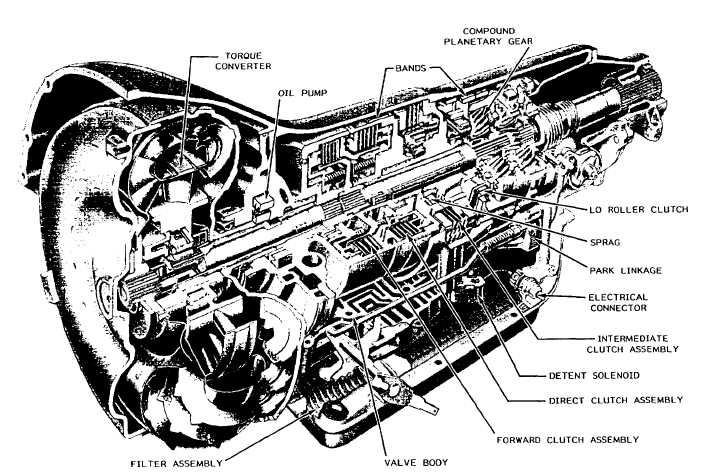purpose of the automatic transmission is the same as standard transmissions-to match the load requirements of a vehicle to the power and speed of the engine. Changing the gear ratio automatically is controlled by throttle position, shift control lever position, and vehicle speed. It relieves the operator of the responsibility of selecting the best possible gear ratio for each condition and makes driving easier and safer.
Many different models of automatic transmissions are manufactured today. Automotive applications usually have three speeds forward and one reverse. More recently the automotive industry has added a lockup clutch to the torque converter, and on some models, an overdrive gear. Automatic transmissions for material handling and construction equipment will normally have a lower gear ratio, be considerable y larger, and may have over six speeds forward and more than one reverse gear.
Whatever the case and regardless of design or construction, all automatic transmissions have the following six basic systems that enable them to function:
1. A torque converter or fluid coupling
2. A hydraulic system
3. A planetary gearset (usually more than one)
4. One or more spool valves used to direct fluid flow
5. Multidisk clutch packs or lockup bands
6. A control valve or a combination of control valves
In automatic transmissions, these systems all serve the same purposes. For this reason, we will only discuss one type of automatic transmission in this TRAMAN. If you want information on a specific type, use the manufacturer's maintenance and repair manual for that unit.
TURBO HYDRA-MATIC MODEL 400
The Model 400 Hydra-Matic transmission (fig. 7-1 1) is a fully automatic unit consisting of a three element torque converter and a compound planetary

Figure 7-11. - Cutaway view of Model 400 Hydra-Matic transmission.
Continue Reading